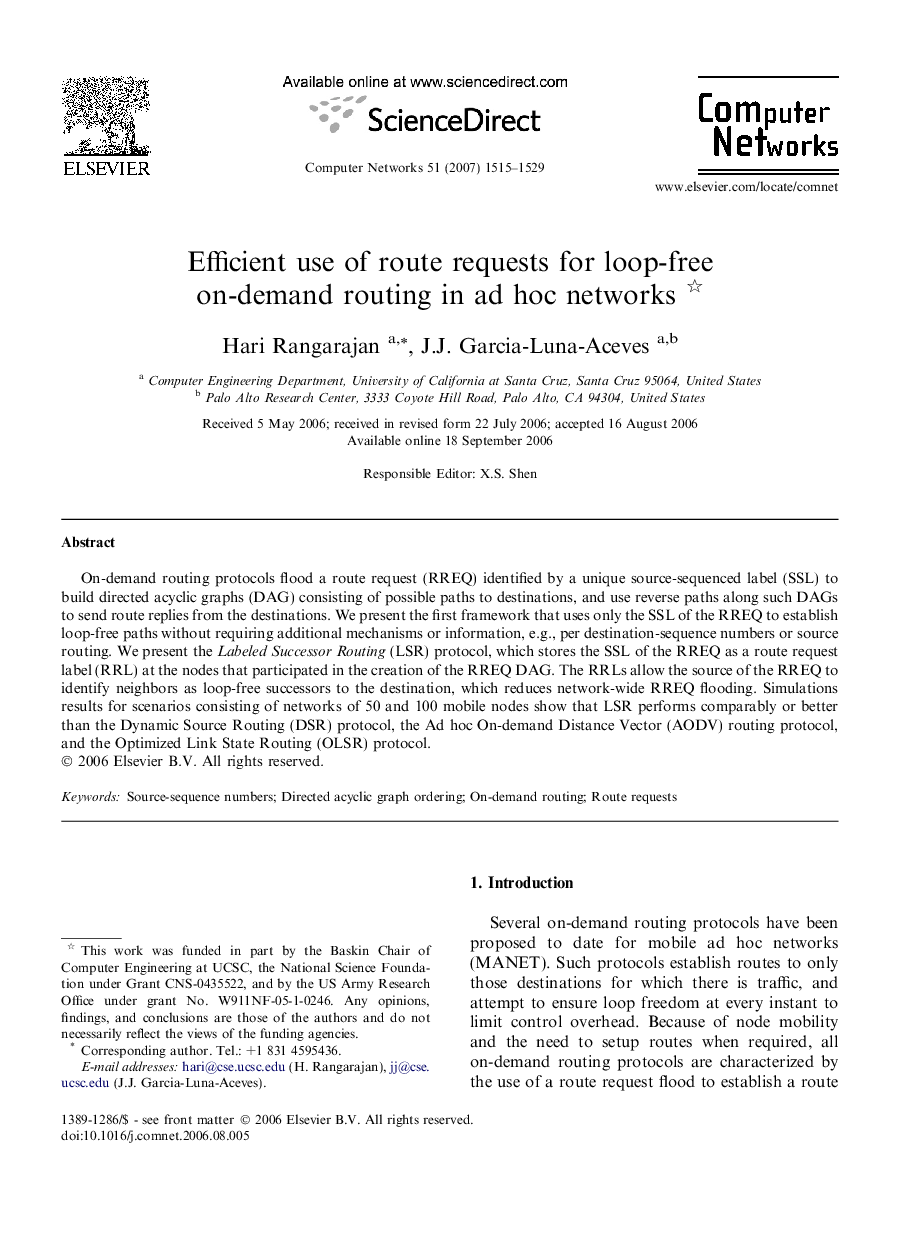| Article ID | Journal | Published Year | Pages | File Type |
|---|---|---|---|---|
| 453276 | Computer Networks | 2007 | 15 Pages |
On-demand routing protocols flood a route request (RREQ) identified by a unique source-sequenced label (SSL) to build directed acyclic graphs (DAG) consisting of possible paths to destinations, and use reverse paths along such DAGs to send route replies from the destinations. We present the first framework that uses only the SSL of the RREQ to establish loop-free paths without requiring additional mechanisms or information, e.g., per destination-sequence numbers or source routing. We present the Labeled Successor Routing (LSR) protocol, which stores the SSL of the RREQ as a route request label (RRL) at the nodes that participated in the creation of the RREQ DAG. The RRLs allow the source of the RREQ to identify neighbors as loop-free successors to the destination, which reduces network-wide RREQ flooding. Simulations results for scenarios consisting of networks of 50 and 100 mobile nodes show that LSR performs comparably or better than the Dynamic Source Routing (DSR) protocol, the Ad hoc On-demand Distance Vector (AODV) routing protocol, and the Optimized Link State Routing (OLSR) protocol.
